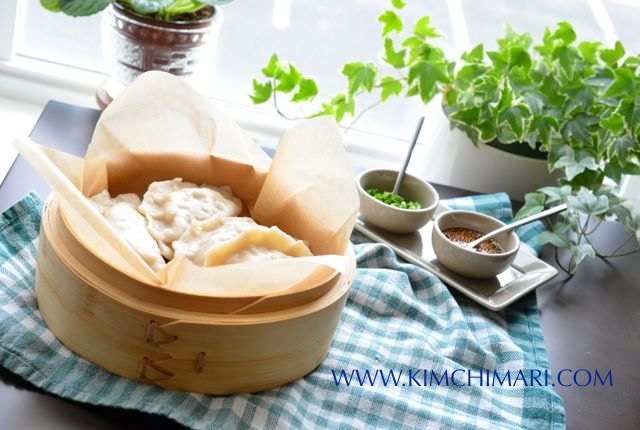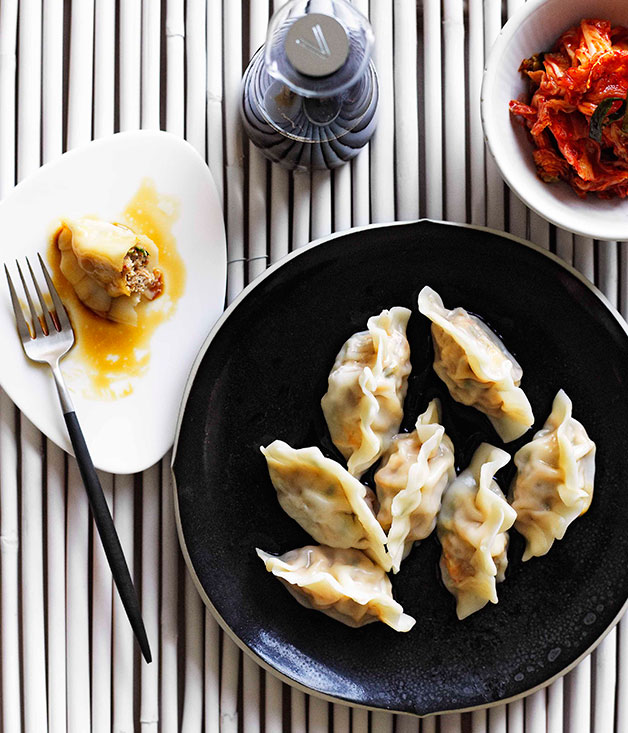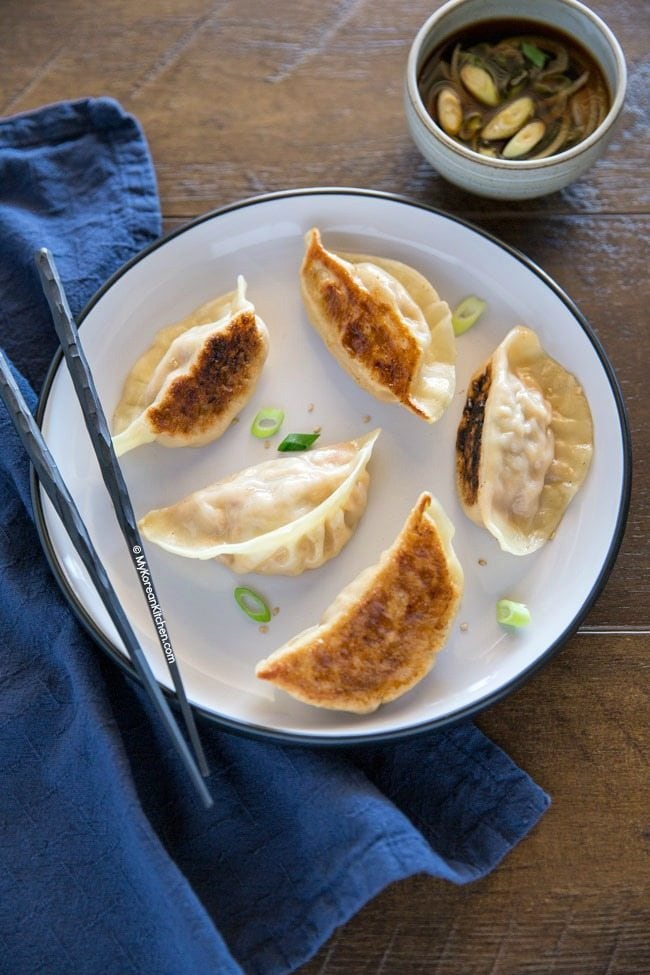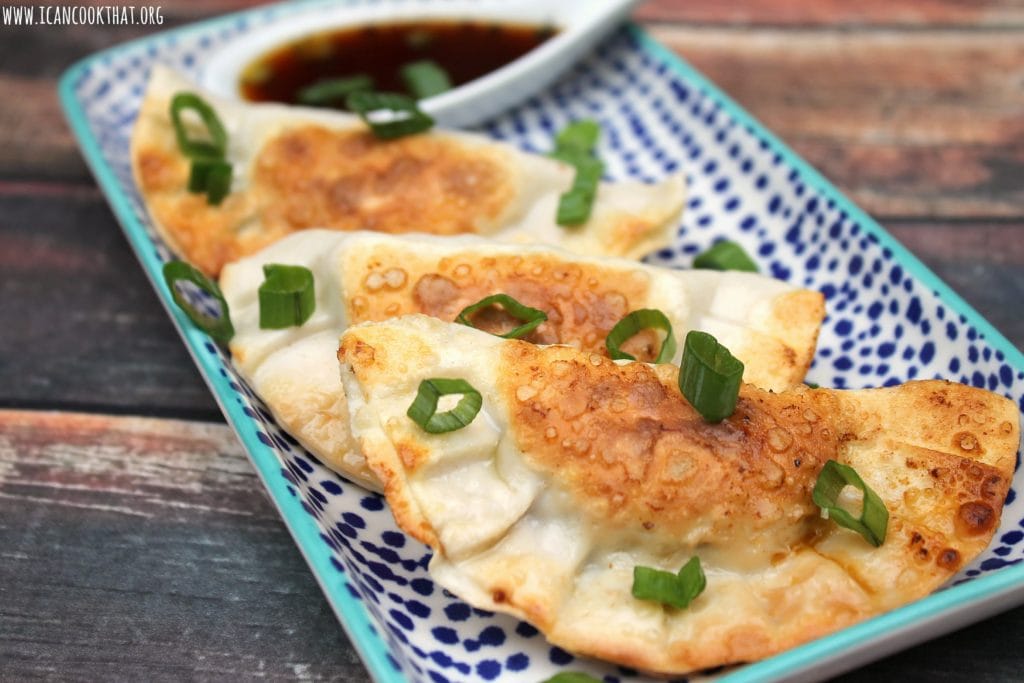Mandu
mandoo, 만두
Mandu , or mandoo, are dumplings in Korean cuisine. Mandu can be steamed, boiled, pan-fried, or deep-fried. The styles also vary across regions in the Korean Peninsula. Mandu were long part of Korean royal court cuisine, but are now found in supermarkets, restaurants, and snack places such as pojangmacha and bunsikjip throughout South Korea. The name is cognate with the names of similar types of meat-filled dumplings along the Silk Road in Central Asia, such as Uyghur manta (مانتا), Turkish mantı, Kazakh mänti (мәнті), Uzbek manti, Afghan mantu, and Armenian mantʿi (մանթի). Chinese mántou (馒头; 饅頭) is also considered a cognate, which used to mean meat-filled dumplings but now refers to steamed buns without any filling. Mandu can be divided into gyoja (교자; 餃子) type and poja (포자; 包子) type. In Chinese, the categories of dumplings are called jiǎozi (饺子; 餃子) and bāozi (包子) respectively, which are cognates with the Korean words. In Japanese, the former-type dumplings are called gyōza (餃子), which is also a cognate. In Mongolian, the latter-type dumplings are called buuz (бууз) and in Nepalese and Tibetan, they are called momo (मम, མོག་མོག) all of which is also cognates with the former.[citation needed]
Source: Wikipedia
:max_bytes(150000):strip_icc()/korean-dumpling-mandoo-2118676-hero-01-2e60dd10c6404f44ba00d6be80b63c0f.jpg)

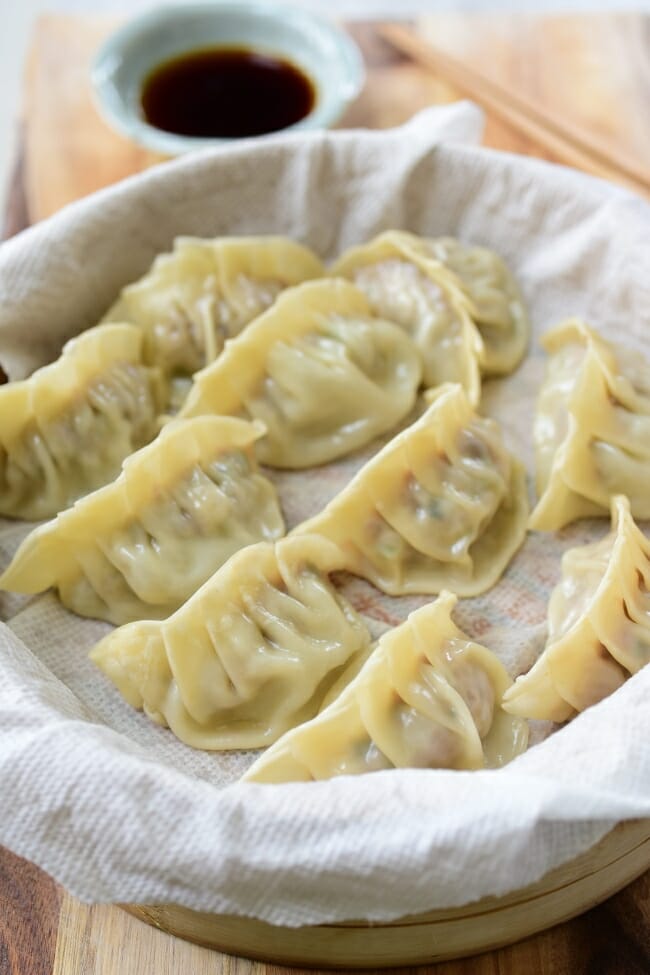

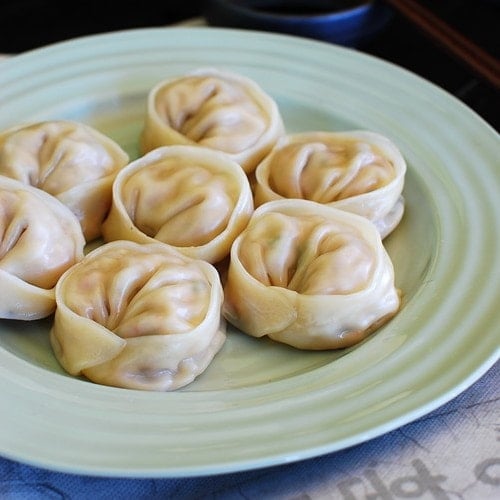
:max_bytes(150000):strip_icc()/5532458-77405f138fc349bd955cbe15cfaae733.jpg)
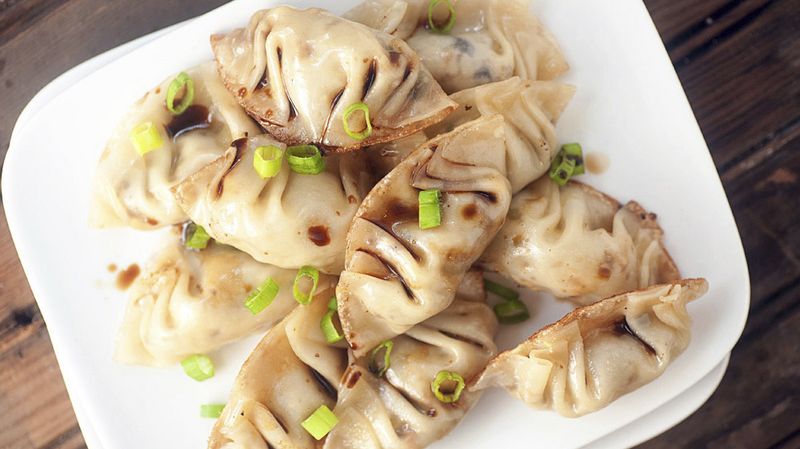
:max_bytes(150000):strip_icc()/korean-vegetable-dumplings-recipe-2118971-Hero-01-a40fe2d9cca5429eb793ffc475f2414b.jpg)
